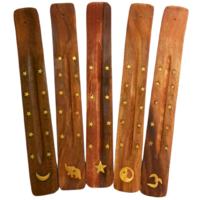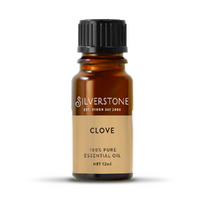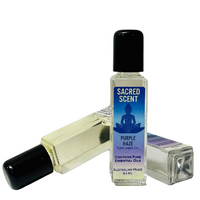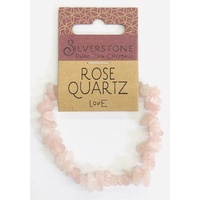Resin & Wood Incense Properties
Date Posted:7 October 2017
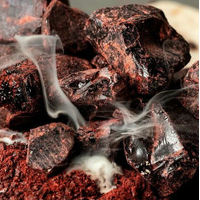

Resin: Nature's Elixir of Healing and Spirituality
Picture this: a tree, wounded and under attack, secretes a magical substance – resin. It's like the life-blood of the tree, swooping in to heal its wounds, fend off infections, and stand as a protective shield. In a nutshell, resin is nature's ultimate repair kit.
But the story of resin goes way beyond tree first aid. It has an awe-inspiring history, with a starring role in ceremonies across the globe. We're talking ancient Egyptians, Native Americans, and even a cameo in the Bible, where it's presented as a sacred gift to baby Jesus.
Now, hold on to your hats – when you ignite these precious resins, they unleash a sacred smoke that dances through the air, filling your space with a divine fragrance. This isn't just any smoke; it's renowned for banishing negativity, connecting you to higher realms, and wrapping you in high-vibe energy. Oh, and it's a wellness superhero too, balancing and protecting your physical and energetic self.
Meet the Resin Heroes: Elevating Your Space
Frankincense Resin (Boswellia sacra)
Used throughout the ages to enhance spirituality, mental perception, meditation, prayer and consciousness, frankincense soothes the spirit as it slows and deepens breathing.
Myrrh Gum Resin (Commiphora myrrha)
This small scrubby tree from the Middle East and northeast Africa produces a precious gum which has been traded for thousands of years. In the Bible, it is a gift to baby Jesus form of one of the Wise Men. Myrrh has been used to improve digestion and boost the immune system. Various traditions have used it to treat coughs, gum disease, wounds, candida and the treatment of skin diseases. Myrrh has been used since antiquity to inspire prayer and meditation and to fortify and revitalize the spirit.
Copal White (Bursera jorullense)
A wonderfully fresh, soft white copal resin with delightful bright and lively notes. Cleansing, refreshing, meditation.
To the ancient Mayan's, the Divine God of the Earth extracted copal resin from the tree of life and gave it to humans as a gift. Copal is said to be cleansing and aid in mental and spiritual endeavours. It opens the soul and stimulates creativity and imagination.
Dark Copal a.k.a. black copal or copal negro (agathis dammara)
Night Copal, as it is often called, carries the secret energies of the night. It is grounding and connects us to deeper levels of our inner spirit. Black Copal has a strong, mysterious, heavy, balsamic, even mystical fragrance
Dragon's Blood Resin (Gold Seal) (Daemonorops draco)
Dragon's blood resin creates a very strong herbal and spicy fragrance. It's considered to be cleansing and as such, has been added in small amounts to Frankincense mixtures used in churches. Dragon's blood is a deep red, shiny resin used in incense burning. The fruit of the tree is covered with scales. The resin seeps out between the scales, is collected, cleansed and then melted. Dragon's blood resin has been used for thousands of years in India as part of their rituals.
Sandalwood Chips (santalum album)
Wonderfully fragrant yellow sandalwood chips Sandalwood produces a warm, sweet, buttery, woody fragrance and has been one of the most prized incense ingredients for thousands of years. Early on in India, people observed that termites never attack sandalwood. For that reason, they considered it a symbol of vitality. Sandalwood has long been used in Ayurvedic medicine as a remedy for bladder and kidney infections, inflammations, skin problems, respiratory problems and many other illnesses. The fragrance of sandalwood creates a relaxing and harmonizing atmosphere of calm and supports the search for inner peace, reflection and balance.
Benzoin (Styrax benzoides - Siam (Thailand))
Benzoin resin has a sweet, balsam-like fragrance resembling vanilla. It does not have a very pleasing aroma by itself but when mixed with other ingredients, it develops into a wonderful aromatic pleasure. Long used since antiquity as an incense ingredient by many civilizations. Known in Europe during the middle ages as "Friar's Balsam." The natural gum is collected from deep incisions made into the tree trunk; it hardens on exposure to the air and is collected. Benzoin is warm, relaxing and calming and as such is good to use in the evening mixed with sandalwood. It has been known to stimulate imagination and good for use in creative work.
Pinon Pine Resin (soft)
Pinon Pine brings a clearing, balsamic bouquet to any incense mixture. It's also wonderful to burn by itself. Pinon resin is cleansing, strengthening, warming. Used by Native American cultures for it's spiritual and healing properties.
Aloeswood (Aquilaria agallocha):
Aloeswood is known as "Jinko" in Japan, which translates as "sinking incense" or "incense that sinks in water," due to the weight of the resin in the wood. Aloeswood comes from the heartwood and roots of the evergreen tree aquilaria agallocha. Some trees become infected by a fungus and, as an immune response, the tree produces a resin to ward off the fungus. It's this precious resin that has been revered for thousands of years by many cultures as the most treasured incense ingredient on Earth!
Camphor (natural) (Dryobalanops aromatica)
From the magnificent camphor trees, which are considered holy by the Chinese, we are given the gift of the natural translucent crystals of borneol camphor. Camphor powder has a smooth, very pleasant cleansing and uplifting fragrance. Very little is needed to give any incense mixture a fresh, wonderful cleansing aroma. It's said to strengthen awareness and be helpful in maintaining concentration. As such, it's often added to morning meditation incense mixtures. Fragrant camphor excretes from the camphor trees naturally through cracks in the trunk and bark. It's also harvested from the fissures that run just under the bark of the tree. Warning: For incense use only. Keep out of the reach of children. Do not take internally. Ingestion can cause severe health problems even death!
Gum Dammar resin (Shorea wiesneri)
Dammar resin, also known as cat-eye resin, lifts the spirit and brings light to the darkness of the soul. Dammar resin is said to be particularly useful to combat sadness, depression and melancholy.
Gum Arabic
Burnt traditionally to enhance spirituality and for purification purposes. Will purify the area of negativity.
Gum Elemi (Canarium commune)
Elemi produces a bright lemony, woody fragrance with a hint of fennel, frankincense and grass. Elemi is known to be clarifying and cleansing with energizing properties. It stimulates mental ability and works well for morning meditation, tai chi or yoga exercises. It creates a spirit of hopefulness and is said to relieve depression. Traditionally, people use elemi with substances that are refreshing and cleansing such as mastic, lemongrass, and sweet grass.
Galbanum resin (Ferula galbaniflua)
Galbanum has long been valued for it's wonderfully complex green, spicy, woody, balsam-like fragrance. The Egyptians imported Galbanum resin in vast amounts, it was among their most treasured incense ingredients. Galbanum, also called "Mother resin", is discharged from the roots and lower trunk of this small wild plant. It originally grew in the Mesopotamia area and was exported to India, China, Israel and Egypt. Today Iran is the primary, if not solitary, the source of all Galbanum. Galbanum was often used to relieve tensions due to anxiety and severe restlessness and to relieve muscle spasms. It was often used during childbirth.
Sandarac gum resin (Tetraclinis articulata)
From Morocco. Sandarac, also known as avar tree, has a wonderfully warm, light, fruity, balsamic, frankincense-like fragrance. Sandarac is still used today to make liquor. In Morocco, it is steeped in folk medicine and is used as a remedy if childbirth becomes difficult. It has a calming effect and reduces cramps. In Arabian countries, sandarac is still burned to treat colds. People also take the resin internally to treat roundworms and tapeworms. During the days of Jesus, sandarac was known as "gold" and is considered by some to be the gold gift to the baby Jesus. Sandarac's warm balsamic fragrance works well in the evenings. It relaxes, calms and eases tension. It is helpful in cases of insomnia caused by tension or stress. Sandarac is cleansing, strengthening and clarifying.
Amber - light (Pinus succinifera)
Ancient Greeks and Egyptians considered amber to be an important healing remedy against mental illness, fever, stomach problems, throat infections, rheumatism and much more. The Greeks called amber the "sunstone" and believed it connected them to the sun god, creating an atmosphere of renewal and alertness. In ancient Greece, amber was called "electron", the root of the word "electricity." When rubbed this resin becomes electrostatic.
Gum Mastic resin (Pistacia lentiscus var. Chia)
Imported directly from Chios, Greece - No. 1 grade pearls. Gum Mastic is a transparent, lemon-white coloured, tear-shaped natural resin from the mastic tree, which grows on the southern part of the island of Chios, Greece and nowhere else in the world. Egypt imported this popular incense from Chios. It was a key ingredient in their ancient "Kyphi" recipes. Mastic creates a light, balsam-like, fresh, lemony, gentle fragrance. It is cleansing, clarifying and mentally refreshing. In ancient Egypt, mastic was also called "the fragrance that pleases the gods." People in North Africa use mastic for incense burning as a tonic for exhaustion. Mastic works well for meditation and reflection, its bright radiant energy is helpful when you need clarity. It's also used as a natural and hygienic chewing gum; excellent for teeth cleaning and as a medicine for stomachache, stomach ulcer, diabetes, cholesterol, etc. The mastic tree is an evergreen bush that grows up to 20 ft (6m) high. The tree lives about a hundred years and is fully grown after about 40-50 years. It starts giving its resin (mastic) when it is 5-6 years old. After about 15 years, it produces from 60 to 400 grams of mastic per year. Since ancient times, mastic has been used as a natural medicine. A leaf fossil from a mastic tree has been found dating back six million years. Mastic oil and other sub products are produced from mastic and are used widely in medicine, the pharmaceutical industry, dentistry, and industry in general. A recent research of the University of Athens / Department of Pharmacy proved that Mastic and Mastic oil has remarkable antibacterial and fungicidal properties. In the USA and Japan, they produce medicine from mastic to treat stomach ulcers and help relieve stomach aches. Traditionally mastic is taken as a medicine to drop the sugar levels of the blood (diabetes) and to improve cholesterol.
Storax (storax calamitos)
Storax produces a warm, balsam-like, sweet, flowery, intense, feminine and slightly grassy fragrance. It adds a sweet sensual note to any incense mixture. Storax is made by boiling the bark of the tree, pressing it to remove the water, then using alcohol extraction to produce the pure resin. The resin is then soaked back into the charcoaled bark.
Now, imagine infusing your space with the magic of these resins, each with its unique power and purpose. Your home, office, or sacred space becomes a haven of high vibes and healing energy. So, which resin will you choose to elevate your surroundings and connect with your higher self?
Disclaimer: The above is for information purposes only. The above information has been collected by Silverstone Incense Traders from web articles and in no way professes to own such content.


